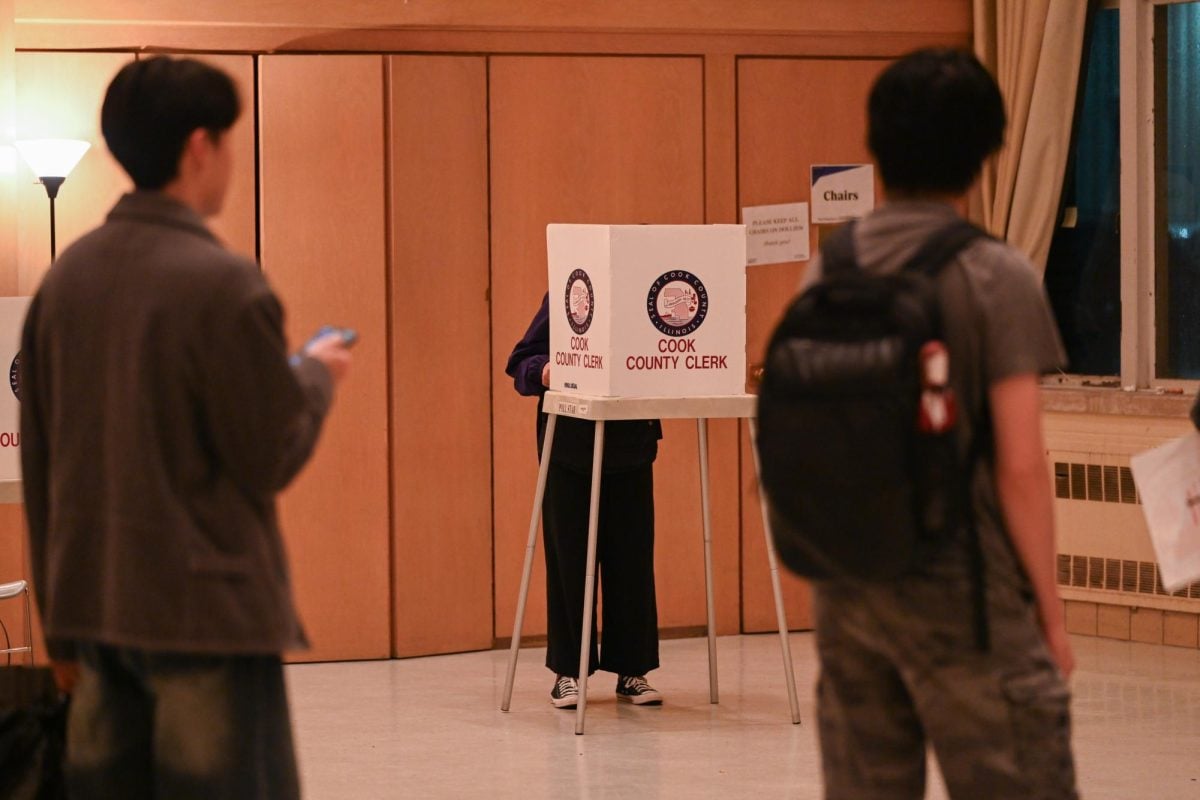Recent research from Northwestern Prof. J. Michael Bailey raises new questions in the science behind sexual orientation, namely bisexuality and the prototypical “gay gene.”
In his studies on bisexuality, Bailey, a psychology professor, and a team of researchers look at sexual arousal patterns to objectively determine sexual orientation in men and women. Bailey tracks the subject’s brain activity while they are looking at erotic pictures to essentially determine “what turns them on,” he said.
One new finding is in the sexual orientation of women. Bailey said he found most of his female subjects to be scientifically bisexual, even if they subjectively thought otherwise.
“Women don’t work in the way we thought, based on a lot of research we did five to 10 years ago,” he said. “Women, at least in the laboratory, get aroused to both stimuli.”
This changes everything, Bailey said.
“Now I don’t even know if women have something like a sexual orientation,” he said.
About two-thirds of women are showing arousal patterns that differ from what they consider to be their orientation, said Adam Safron, a research consultant on the project.
“Women are not being driven in their arousal pattern in the same way as males,” he said.
Male arousal patterns were less flexible than female patterns, Bailey said. Men who believed themselves to be bisexual were aroused by both female and male stimuli but exhibited a stronger arousal to males than females. Bailey published a paper in 2005 suggesting bisexual men do not have bisexual arousal patterns. If sexual arousal patterns are the key to sexual orientation and his research is accurate, male bisexuality may not actually exist, Bailey said.
“I never meant to suggest bisexual men were lying about their sexuality,” he said. “But there has been some skepticism about if bisexual men are really bisexual in the same way gay men are gay or straight men straight.”
Safron said the science behind sexual orientation can get complicated.
“In terms of what people tell you they like, you can’t always trust what they tell you, especially with something as emotionally involved as sexuality,” he said.
Bailey is also researching the molecular genetic study of sexual orientation. In other words, he is looking for a “gay gene,” or a genetic marker that corresponds with homosexuality. To do this, Bailey is comparing the DNA of two brothers who are both gay.
“If there is a gene, they’re both likely to share it,” he said. “We’re looking for pieces of chromosomes that these gay brothers share far more than would be expected by chance.”
Bailey said if a “gay gene” is discovered, public reaction will be interesting.
“People are going to make a big deal out of this because people are obsessed with this topic,” he said. “We obviously find this topic very interesting, but people often make more than they should of these kinds of results. “
However, the term “gay gene” is somewhat misleading, because there are likely multiple genes involved, Safron said.
Weinberg freshman Tim Hughes said he is skeptical of research that aims to find a genetic link to homosexuality.
“As a gay man, I feel the research opens up doors to discrimination,” he said. “Especially in countries where homosexuality is illegal, if a test exists to prove homosexuality, it gives people more power to persecute gay people.”
Another issue raised by the potential discovery of a genetic marker for homosexuality is the eventual ability to abort fetuses based on their sexual orientation.
Bailey said he wants to emphasize this potential to abort fetuses based on sexual orientation is not eugenics, and researchers are “far away” from such a discovery.
“I have no interest in practicing eugenics in terms of changing society to make it more uniform,” he said. “It’s not about society mandating what everybody must do, it’s about parents being allowed to try to affect their child. We already let parents do that. We expect parents to do that.”
Many people in support of abortion rights strongly oppose this idea, Safron said. He said he himself is unsure of the right answer, and it is a complicated issue to figure out.
“It seems to me that if you support a woman’s right a choose, this is not a case where you can step aside from that belief,” he said. “You are going to have to take the good with the bad in terms of reasons for abortion.”
Both Safron and Bailey said the argument could be made for any aborted fetus, not just fetuses aborted because of sexual orientation.
“We have the option now of aborting fetuses because we woke up on the wrong side of the bed on Tuesday, ” Bailey said. “We think parents who don’t value gay people are bad. But that doesn’t mean we don’t let those people abort that gay fetus. Making them have a gay child is a perverse limitation of freedom.”
Safron said the abortion issue should be put aside as research on sexual orientation continues.
“It’s the other assumptions people have that are the problem,” he said. “The idea that some people are more or less worthy of respect, freedom, kindness, based on personal lifestyle choices that don’t hurt anyone is the real issue here.”[email protected]






